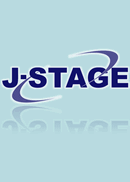Volume 47, Issue 5
Displaying 1-10 of 10 articles from this issue
- |<
- <
- 1
- >
- >|
-
Article type: Cover
1996Volume 47Issue 5 Pages Cover5-
Published: December 15, 1996
Released on J-STAGE: November 01, 2017
Download PDF (59K) -
Article type: Cover
1996Volume 47Issue 5 Pages Cover6-
Published: December 15, 1996
Released on J-STAGE: November 01, 2017
Download PDF (59K) -
Article type: Index
1996Volume 47Issue 5 Pages Toc3-
Published: December 15, 1996
Released on J-STAGE: November 01, 2017
Download PDF (32K) -
Article type: Article
1996Volume 47Issue 5 Pages 275-281
Published: December 15, 1996
Released on J-STAGE: November 01, 2017
Download PDF (780K) -
Article type: Article
1996Volume 47Issue 5 Pages 282-291
Published: December 15, 1996
Released on J-STAGE: November 01, 2017
Download PDF (1216K) -
Article type: Article
1996Volume 47Issue 5 Pages 292-297
Published: December 15, 1996
Released on J-STAGE: November 01, 2017
Download PDF (685K) -
Article type: Article
1996Volume 47Issue 5 Pages 298-306
Published: December 15, 1996
Released on J-STAGE: November 01, 2017
Download PDF (924K) -
Article type: Article
1996Volume 47Issue 5 Pages 307-316
Published: December 15, 1996
Released on J-STAGE: November 01, 2017
Download PDF (1075K) -
Article type: Article
1996Volume 47Issue 5 Pages 317-326
Published: December 15, 1996
Released on J-STAGE: November 01, 2017
Download PDF (986K) -
Article type: Appendix
1996Volume 47Issue 5 Pages App3-
Published: December 15, 1996
Released on J-STAGE: November 01, 2017
Download PDF (47K)
- |<
- <
- 1
- >
- >|
